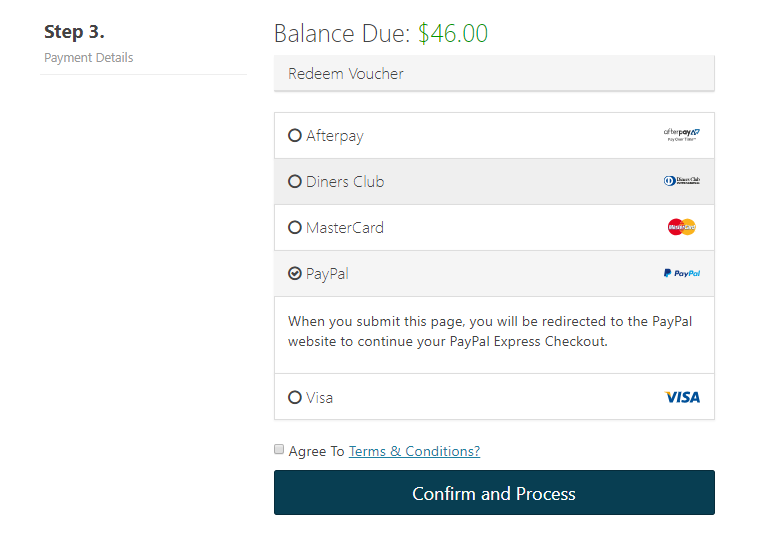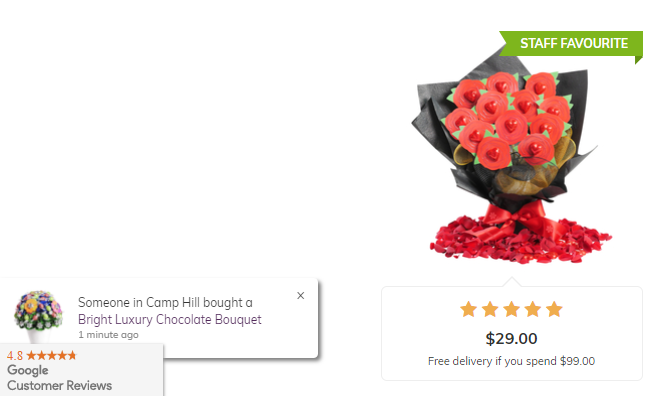
Ecommerce and Retail • Ecommerce Design


Every year, it’s estimated that over $18 billion of sales revenue is lost in abandoned online shopping carts and while there’s a stack of stats floating around about the rate of cart abandonment, it seems to average somewhere around the 70% mark.
Naturally there is a percentage of shoppers who weren’t really ready to buy and were still in the browsing stage, but that still leaves a huge number of shoppers who didn’t convert to a sale at the checkout stage and therefore, a huge opportunity for ecommerce retailers. Conversion rates for ecommerce vary from 2% to 5% depending on your industry, so there’s definitely room for improvement.
How does your business measure up?
Even if you’re above industry average, some small improvements at your ecommerce checkout could dramatically improve your rate of conversion.
So here's 12 of the best ways to reduce friction at the checkout and get those sales!
One of the leading reasons that shoppers leave their cart at the checkout stage is because of additional costs such as shipping or payment processing fees. Ideally you should try and offer free shipping to help shoppers overcome the final psychological hurdle in the purchase process, but if that’s just not feasible, be upfront about your fees early on and include it as part of the product description. Don’t forget to add your shipping policy in plain sight so that buyers who are overseas, remote, or just want the item quickly can figure out if and when they will get their delivery.

When you consider how many accounts people need to have, it’s no wonder shoppers baulk at setting up one with an online retailer. Rather than lose them at the checkout, let them buy without setting up an account first, like retailer, Maison Blanche does. This secures the sale and you can always remarket to them at a later date and promote the benefits of joining (faster checkout, discounts etc).

By the time a customer has made it to your checkout, they’ve already been on quite a journey through your website so don’t make this stage any longer than it needs to be. Not only should your checkout be a single page to make it simple and less stressful for a user, it should also be well designed in easy to understand sections such as personal details, shipping details and payment details with clear call to action buttons.
Have you ever hit the ‘buy now’, button only to be diverted to what looks like a completely different website? To optimise conversions, ensure your payment gateway is integrated into your website, and that the entire payment process is a smooth user experience. If you really can’t avoid a separate payment website, communicate to your customers what’s about to happen and reinforce that it’s a secure payment process for your customer.

Speaking of payments, the expectation these days is for ecommerce retailers to offer a choice of payment methods. This usually includes PayPal and credit cards but retailers are now increasingly offering Afterpay or ZipPay options (buy now pay later). And if you have the capacity for processing, why not offer direct bank deposit? Just be sure to explain that dispatch happens only after funds are received.
Your ecommerce conversion rate could really be suffering if shoppers can’t see evidence of your website security. Ensure your web address is a secure https, display the logos of your endorsed payment methods and protect your checkout with a SSL certificate and encryption. By clearly displaying the ways in which you safeguard payment and personal details, you build trust and reassure customers that they are safe and secure.
Want confidence in your website and hosting? Neto stores are hosted on secure infrastructure and come with unlimited bandwidth, storage, DDoS protection and a 99.9% uptime guarantee. Start your free trial today.
Whether it’s broken links, slow loading pages or just dead ends, issues with your website will lead to an increase in abandoned shopping carts. Closely monitor your site and monitor customer feedback for any issues. You also need to ensure your website host is up to the task with suitable contingency plans and alerts. Update any website plugins and monitor your page speed on a regular basis.
With more than half of Internet traffic coming from mobile devices, there is also an increasing intent to purchase via mobile as well. But many ecommerce sites aren’t yet up to speed and are losing purchasers at the checkout page. Get ahead of your competition by ensuring you offer a mobile friendly payment system with easy to navigate pages and forms that are easy to populate on a smaller touch screen. To learn more about mobile responsive design, check out our article The dos and don’ts of mobile-friendly web design.

Just in case your purchaser gets cold feet at the very last stage be sure to mention your returns policy for their complete peace of mind. As with shipping, free returns is the ideal way to go but if that’s not an option for your business, be very clear about your returns policy (especially for change of mind) and promote the features that will help them finalise their purchase.
There’s nothing like a happy customer to help another make the decision to purchase. From customer testimonials and product reviews to social media images, anything that can be displayed towards the end of the purchase process that will help your cause should be incorporated. And to add urgency, include pop ups that detail products which have recently been purchased by other shoppers.

If your ecommerce business is ready to take on the world, you need to be ready to take their money, which means an inbuilt currency converter that allows your customer to pay in their own currency. This is called dynamic currency conversion and is generally applied to Visa and Mastercard. The converted amount is displayed to the shopper and they can choose to pay in the local currency or their own.
Test, test and test again. The one true measure of your checkout experience is to test it yourself, and better still ask staff and friends to do it too and this includes completing a payment. Provide a feedback form they can populate along the way to ensure they really think about every step of the purchasing process - how easy is it to use and understand, how fast it loads and any clunky or unnecessary steps. Be sure to include testers who aren’t familiar with your ecommerce website. And once you’ve implemented your changes, measure your checkout conversions and test new strategies to see what works.
These 12 easy tips will help improve your conversion rate at the checkout, but don’t forget to think beyond the checkout. There are many ways to improve ecommerce conversions that start from the moment potential customers arrive at your website.